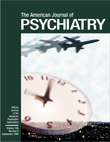Handbook of ECT
Charles Kellner and his colleagues state their intention that this handbook serve as a “pocket reference” for the ECT practitioner. It is, indeed, the only recent ECT publication that can be carried into the ECT suite and easily used there.
With its publication, the handbook extends the spectrum of literature on ECT. We now have a journal (The Journal of ECT, edited by Dr. Kellner), an encyclopedic textbook (Electroconvulsive Therapy, by Richard Abrams [1]), and a programmed text by Beyer et al. [2]). We also have a “practice guideline” in the form of an APA Task Force Report, published in 1990 (3) and soon to be released in a new edition.
Handbook of ECT serves as an excellent how-to guide, a useful thing to have when learning one of psychiatry’s few hands-on procedures. Two of the handbook’s authors, Kellner and Coffey, have served as faculty for continuing medical education courses on ECT at APA annual meetings and elsewhere and are uniquely experienced in teaching basic procedure and theory. The ECT procedure is presented in clear, concise steps, from patient selection and preparation through stimulus delivery and posttreatment monitoring. Care is taken to distinguish among the different ECT devices currently used, and stimulus-dosing strategies and data recording are explained for each model.
One drawback of the book is a tendency to present areas of controversy in too neutral a fashion. The pros and cons of different stimulus dosing techniques and the use of prophylactic anticholinergic medications are offered with no statement of a preference or guideline. However, this should lead a thoughtful medical student or resident to retrieve the handbook from his or her pocket and begin an intellectual give-and-take with the ECT attending physician in the ambiguous clinical situations that often arise. What better way to master one’s craft?
This handbook will complement the more extensive references on ECT, although the authors could have provided more comprehensive literature reviews for researching advanced topics. Practitioners needing to treat patients with an alternative muscle relaxant, for instance, will find only minimal information on the subject and little instruction on where to go for more. However, as a basic reference and training manual for residents and beginning practitioners, this handbook belongs in their pockets.
1. Abrams R: Electroconvulsive Therapy, 3rd ed. New York, Oxford University Press, 1997Google Scholar
2. Beyer JL, Weiner RD, Glenn MD: Electroconvulsive Therapy: A Programmed Text, 2nd ed. Washington, DC, American Psychiatric Press, 1998Google Scholar
3. The Practice of Electroconvulsive Therapy: Recommendations for Treatment, Training, and Privileging: A Task Force Report of the American Psychiatric Association. Washington, DC, APA, 1990Google Scholar



